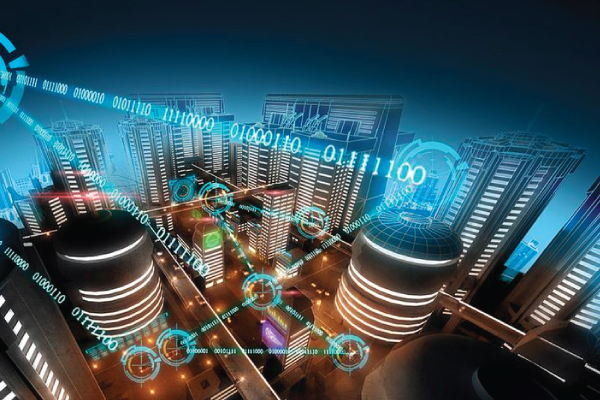A few months ago, I was invited by a leading global bank in Singapore to present on the aforementioned topic at a workshop for their next-generation high net worth (HNW) clients. Fellow speakers were leading C-Suite professionals from the finance, commerce, and investment community.
Given the unique profile of the audience, they wanted to hear about digital modernization initiatives undertaken by a spectrum of billion-dollar enterprises across multiple industry segments, geographies, and platforms. More specifically, they wanted to understand how these initiatives led to scale-up in their forward business pursuits.
Going back into memory lane of over 25 years of personal experience of directly engaging with over 100 large enterprises from APAC/Europe/USA, I reviewed the various strategic and tactical measures adopted by those enterprises that succeeded in their digital modernization. Herewith I have outlined six (6) common differentiators.
1# Every modernization story has a defined central theme at the beginning
Enterprises have myriad reasons for modernization but defining a central theme at the beginning of the journey has been a critical differentiator. Successful enterprises had a clear strategic definition of what they wanted to accomplish based on complexity, cost, function, and size. They had the confidence that the central theme could enhance revenues, organizational efficiency, stock prices, and stakeholder satisfaction.
Commonly adopted central themes were digital automation (for organizational efficiency), digital capitalization (for increasing the net worth), digital commerce (for new revenue generation), digital experience (for enhanced customer experience), digital expansion (for growth and market penetration), digital innovation (for creating new products), digital marketing (for increased inbound traffic) and digital transformation (for overall modernization).
A central theme enabled the enterprises in concentrating their valuable resources in specific and actionable pursuits. Each theme in turn had multiple metrics to measure their effectiveness. Thereby increasing the success rate and return on their modernization investments.
2# Clarity in “start-state”, “mid-state” and “end-state” goals
Many enterprises had a good start and lost momentum once the modernization budgets were approved. Having a defined central theme, successful enterprises always outlined “start-state”, “mid-state” and “end-state” goals that could be easily defended, defined, designed, developed, and deployed across various business units.
Having these goals defined at the beginning also provided cohesive alignment and oversight. At every monthly steering committee meeting, the senior leadership was able to measure the progress and outcomes. Most important, business units that worked in silos usually got unified around these modernization initiatives. In addition, it enabled the leaders with technical, operational, and business acumen to compress the modernization roadmaps into small independent projects and manage them effectively.
3# Holistic planning to face barriers & challenges
Successful enterprises catered for calibrated planning to ensure the barriers and challenges to digital modernization were adequately managed. In most cases, they analyzed key factors that could be show-stoppers well in advance. These included lack of domain leadership, employee pushback, limited executive sponsorship, fixed budgets, and unrealistic expectations.
Regardless of the project management approach adopted (waterfall, agile, etc), having a detailed plan enabled them to be aligned with the central theme and the start-state, mid-state and end-state goals. Such holistic planning always ensured that a strong ecosystem consisting of modernization roadmaps, governance, executive sponsorship, internal influencers, delivery plans and trusted systems integrators were chosen with best-of-class due diligence.
4# Charismatic leadership
Charismatic domain leadership to drive modernization is important so they could command the respect of all internal business units across the enterprise. In addition, have a rapport with external stakeholders from the platform and systems integrator ecosystem as well. In addition, they could efficiently handle employee pushback and poorly aligned standardization.
Having control over centralized meetings was very important esp. to reduce the time away from the core functions. Leaders had the right-sized approach to ensure that all meetings were organized with well-defined agendas and business outcomes. Charisma played a great facilitating role because the leaders were able to articulate, convince and rally the stakeholders.
5# Journey-based and not feature-based business readiness testing (BRT) approach
There are many approaches to testing, but enterprises adopting journey-based BRT approach had the greatest success in production deployment of the modernization initiatives and acceptance by business users and stakeholders. In most cases, the BRT scenarios were provided for in the RFP stage itself and were fine-tuned in the User Requirements Specifications (URS) & Functional Requirements Specifications (FRS) documents.
A major source of friction between the enterprises, platform vendors and systems integrators were mitigated by BRT adoption regardless of the project implementation and deployment models.
6# Reinvention was always accommodated; small compressed projects a winner
All modernization initiatives go through varying stages of roadmap, momentum, adoption and decline. A fixed roadmap or blueprint will not stand the test of time. Successful enterprises accommodated reinvention strategies in the initial roadmap so they could make adjustments due to changing dynamics within the enterprise. In addition, reinvention enabled the leaders with technical, operational and business acumen to compress the modernization roadmaps into small independent projects and manage them effectively.
Finally, these common differentiators have worked in majority of the cases. There are several other attributes that have worked well for organizations on a case by case basis which have not been represented here. At the end, getting digital modernization right is big business and high stakes with immense revenue generation potential.
Our Services
Customer Experience Management
- Content Management
- Marketing Automation
- Mobile Application Development
- Drupal Support and Maintanence
Enterprise Modernization, Platforms & Cloud
- Modernization Strategy
- API Management & Developer Portals
- Hybrid Cloud & Cloud Native Platforms
- Site Reliability Engineering



